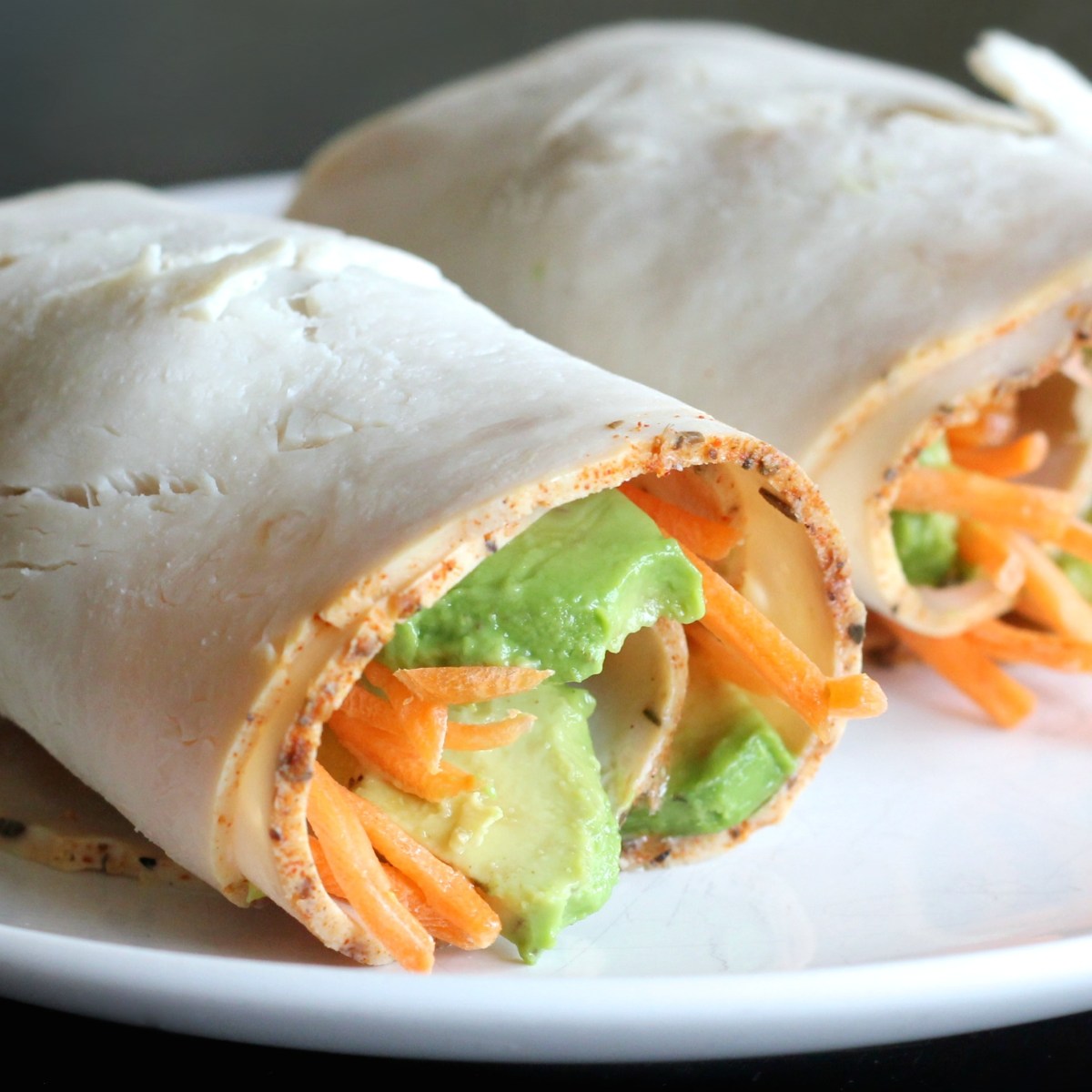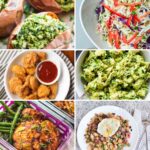Craving a healthy, satisfying meal without spending hours in the kitchen? Paleo wraps offer a delicious and convenient solution. Imagine vibrant colors bursting from a perfectly constructed wrap, the textures contrasting beautifully – crisp greens against tender meat, the savory aromas tempting your senses. This isn’t just about sustenance; it’s about crafting quick, flavorful meals that nourish your body and delight your palate, all within the framework of the paleo diet.
This guide dives deep into the world of quick paleo wraps, exploring the best ingredients, simple recipes ready in under 15 minutes, and creative filling ideas to keep your meals exciting and diverse. We’ll unveil the secrets to building a structurally sound wrap that holds its contents beautifully, ensuring each bite is a delightful explosion of flavor and texture. Whether you’re a seasoned paleo enthusiast or just starting your journey, get ready to transform your mealtimes with these easy and delicious recipes.
Paleo Wrap Alternatives to Traditional Tortillas
Stepping away from traditional tortillas opens up a world of flavor and nutritional possibilities within the paleo diet. These alternatives offer a variety of textures and nutrient profiles, allowing you to tailor your wraps to your specific dietary needs and preferences. Choosing the right wrap base can significantly impact the overall nutritional value and culinary experience of your meal.
Paleo Wrap Base Comparison
The following table details the nutritional profiles and ease of use for three popular paleo wrap alternatives: lettuce wraps, collard green wraps, and zucchini slices. These options offer diverse textures and nutritional benefits, making them suitable for a wide range of fillings.
| Wrap Base | Calories (per serving) | Fiber (per serving) | Ease of Use |
|---|---|---|---|
| Lettuce Wraps (e.g., Romaine or Butter Lettuce) | 5-10 | 1-2g | Easy |
| Collard Green Wraps | 20-30 | 3-4g | Moderate |
| Zucchini Slices | 15-25 | 1-2g | Moderate |
Note: Calorie and fiber content can vary depending on the specific type and size of the wrap base. These values represent approximate ranges.
Lettuce Wrap Preparation
Preparing lettuce wraps is incredibly straightforward. The key is selecting sturdy leaves that can hold the filling without tearing.
- Select large, firm leaves of romaine or butter lettuce. Avoid leaves that show signs of wilting or damage.
- Gently rinse the lettuce leaves under cold water to remove any dirt or debris. Thoroughly pat them dry with a clean paper towel or salad spinner.
- Carefully separate the leaves and discard any damaged or overly fragile pieces.
- Fill each lettuce leaf with your desired paleo-friendly ingredients. For heartier fillings, consider using smaller, more compact portions.
Collard Green Wrap Preparation
Collard greens offer a more robust wrap option compared to lettuce. A slight pre-treatment step enhances their flexibility and prevents them from tearing easily.
- Select large, dark green collard leaves. Look for leaves that are firm and free from blemishes.
- Wash the collard leaves thoroughly and pat them dry.
- Remove the tough central stem from each leaf using a sharp knife. This makes the leaves more pliable and easier to handle.
- Blanch the leaves for 30-60 seconds in boiling water to slightly soften them. This step is optional but improves flexibility and reduces the bitterness.
- Immediately plunge the blanched leaves into ice water to stop the cooking process. This also helps maintain their vibrant green color.
- Pat the leaves dry again before filling with your choice of ingredients.
Zucchini Slice Preparation
Zucchini slices provide a unique, slightly savory element to paleo wraps. Their mild flavor complements a variety of fillings.
- Select firm, medium-sized zucchini. Avoid zucchini that is soft or shows signs of spoilage.
- Wash the zucchini and slice it into approximately 1/4-inch thick rounds. Use a mandoline slicer for uniform thickness if desired.
- If using thicker slices, consider grilling or lightly sautéing them to soften them slightly and enhance their flavor. This step is optional.
- Arrange the zucchini slices on a plate and fill them with your preferred ingredients.
Advantages and Disadvantages of Each Wrap Base
Lettuce wraps are exceptionally easy to prepare and require minimal effort. However, their delicate nature limits their suitability for heavier fillings. Collard green wraps offer a more robust and durable option, but require a bit more preparation. Zucchini slices offer a unique flavor and texture, but their moisture content might make them less suitable for very wet fillings. Ultimately, the best choice depends on your personal preferences and the specific ingredients used in your wrap.
Step-by-Step Guide

Crafting the perfect paleo wrap is an art, balancing flavor, texture, and structural integrity. This guide will walk you through each step, ensuring your creation is not only delicious but also visually appealing and easy to eat. We’ll focus on building a robust wrap that holds its fillings without crumbling or falling apart.
Layering Ingredients for Optimal Flavor and Texture
The key to a great paleo wrap lies in strategic layering. Begin with a base of creamy or slightly saucy ingredients to prevent dryness and enhance the overall flavor profile. This will act as a binding agent, helping to hold the other ingredients together. Next, add heartier elements like grilled chicken or vegetables, followed by lighter ingredients such as shredded lettuce or fresh herbs. This order prevents the heavier ingredients from overwhelming the delicate flavors and ensures even distribution.
Building the Wrap: A Step-by-Step Approach
- Prepare your wrap base: Lay your chosen paleo wrap flat on a clean surface. Imagine a large, pliable leaf, ready to be filled with culinary treasures.
- Apply a base layer: Spread a thin layer of your chosen sauce or dressing – perhaps a vibrant avocado crema or a tangy pesto – across the center of the wrap, leaving about an inch of border on all sides. This will act as a glue, holding everything together.
- Add heartier ingredients: Arrange your heartier fillings – such as grilled chicken, roasted vegetables, or cooked quinoa – in a neat line down the center of the wrap. Visualize a colorful, balanced landscape of flavors.
- Layer lighter ingredients: Top the heartier ingredients with lighter additions like shredded lettuce, thinly sliced cucumbers, or fresh herbs. This adds a refreshing crunch and visual appeal. Think of this as adding delicate brushstrokes to your culinary masterpiece.
- Fold and secure: Begin by folding the bottom edge of the wrap over the fillings, then fold in the sides, tucking them neatly. Finally, roll the wrap tightly from the bottom up, creating a compact cylinder. The goal is a firm, secure roll that won’t unravel easily.
- Enhance with garnishes: Before serving, consider adding a final flourish. A sprinkle of chopped nuts, seeds, or a drizzle of extra sauce can elevate both the taste and presentation. Imagine a final touch of artistic flair, adding visual interest and complexity.
Preventing Spills and Maintaining Structural Integrity
To prevent spills and maintain structural integrity, ensure the wrap is tightly rolled and the fillings are evenly distributed. Avoid overloading the wrap with too many ingredients, as this can lead to breakage and messy spills. The use of a slightly sticky sauce or dressing in the base layer is crucial for binding the ingredients together and preventing slippage. Imagine the sauce as a culinary mortar, holding the ingredients together in perfect harmony.
Flavor Enhancement and Presentation Techniques
Flavor and presentation are intrinsically linked. Consider using a vibrant sauce – a zesty lime dressing, a creamy cashew cream, or a spicy sriracha mayo – to add depth and visual interest. Garnishes like fresh herbs, toasted nuts, or a sprinkle of chili flakes can transform a simple wrap into a culinary masterpiece. Imagine the final touches as the artist’s signature, adding a personal touch and elevating the overall appeal.
From choosing the perfect wrap base to mastering the art of layering ingredients, creating quick and delicious paleo wraps is easier than you might think. With a little creativity and these simple recipes, you can enjoy healthy, flavorful meals that fit seamlessly into even the busiest schedules. So, ditch the processed foods and embrace the vibrant flavors and nutritional benefits of paleo wraps. Your taste buds (and your body) will thank you. The journey to healthier, faster meals starts now – explore the possibilities and discover your new favorite quick and easy paleo wrap!
FAQ
Can I make paleo wraps ahead of time?
Yes! Many paleo wrap fillings can be prepped in advance. Prepare your meat and vegetables, store them separately, and assemble your wraps just before eating for optimal freshness and texture.
What if my wrap base tears?
Use a larger leaf or wrap base, or try overlapping smaller leaves to create a more robust foundation. Avoid overfilling the wrap to prevent stress on the base.
Are there any vegan/vegetarian options for paleo wraps?
While traditional paleo focuses on meat, you can create vegetarian wraps using hearty vegetables, nuts, and seeds for protein. Ensure you focus on nutrient-dense options.
How can I store leftover paleo wraps?
Store leftover wraps in an airtight container in the refrigerator for up to 3 days. They may not hold their shape as well as freshly made wraps.


